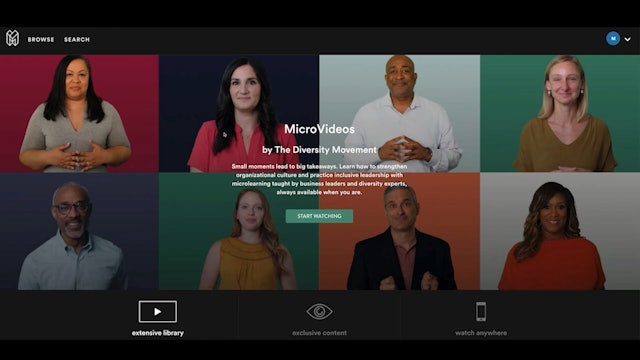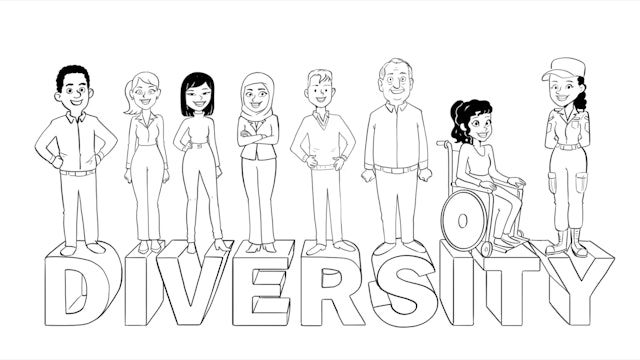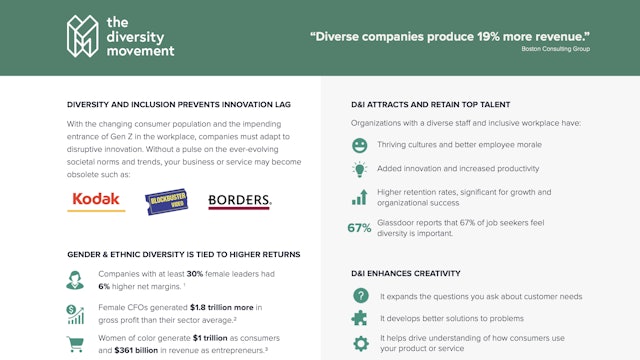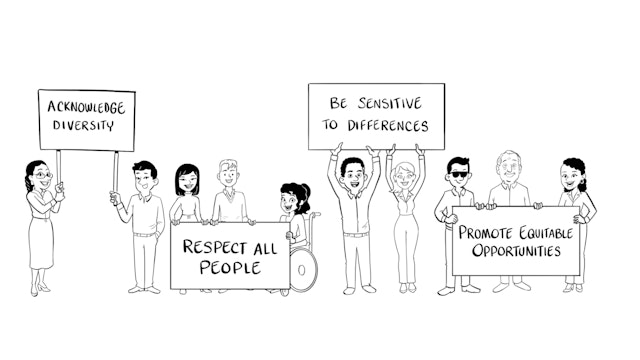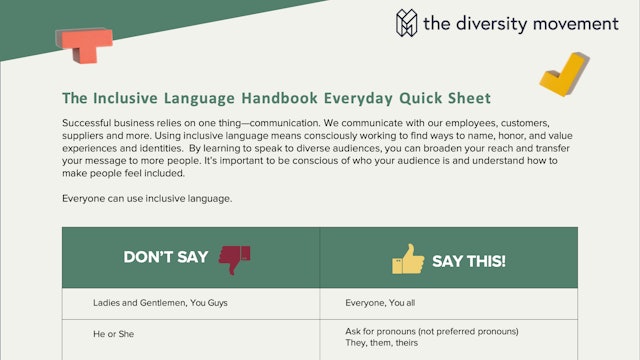-
How To Get Started With MicroVideos
Learn about the Getting Started playlist to jumpstart your MicroVideo learning journey.
-
Types of Diversity
Learn about several dimensions of diversity including race, ethnicity, gender identity, sexual orientation, neurodiversity, age, ability, religion, and acquired diversity.
-
What is the Business Case for DEI?
Learn why DEI must be tied to business outcomes to be sustained within an organization. Understand DEI's impact on people, planet, profit, and how each of those pillars leads to organizational growth.
-
The Business Case for DEI One Pager
1.15 MB
-
What is the Difference Between EEO, Affirmative Action, and DEI?
Reinforce your understanding of the federal government’s Equal Employment Opportunity and Affirmative Action programs and the legal compliance they require. Compare these to voluntary DEI initiatives that generate enormous benefits to companies, their employees, and financial performance.
-
Why Does Diversity and Inclusion Matter?
Gain a better understanding of diversity and inclusion in the context of the workplace, the many ways to foster feelings of belonging and loyalty among your employees, and how an inclusive environment can unlock the impressive power of diversity throughout your organization.
-
Pronouns 101
Listen as Susie breaks down a few different sets of pronouns as well as what pronouns are most common in the workplace. Then, she dives into why using the phrase "preferred pronouns" is not inclusive.
-
Rules of Inclusive Language
Being a welcoming and inclusive organization means consciously working to find ways to name, honor, and value experiences and identities. Increasing the inclusivity of our language addresses the way that language often unconsciously makes assumptions about people. Here are a few rules to follow t...
-
Inclusive Language Everyday Quick Sheet
110 KB
-
Approaching Tough Conversations as an Ally
Benefit from this thoughtful analysis of how to handle challenging conversations on sensitive or personal topics. Learn how to approach difficult discussions as an empathic ally and how self-education can help you to minimize unnecessary and uncomfortable questioning of others.
-
How to React When a Coworker Says Something Racially Insensitive
In this example video, learn how to correctly intervene when a coworker says something that’s racially insensitive.
-
How Can I Disrupt Bias Against Women?
In this example video, learn how to interrupt everyday bias against the women in your office. Here is our suggested course of action to stop microaggressions in a firm, yet non-confrontational, manner.
-
How To Be an LGBTQ+ Ally
Approximately 7% of people in the U.S. identify as LGBTQ+. Here are a few steps you can take to act as an ally to your LGBTQ+ colleagues, employees, friends, family members, and more. These tips will help you create real change in the world around you.
-
5 Core Principles of Disability Etiquette
Improve both your understanding and your ability to treat people with disabilities with dignity and respect by absorbing these valuable principles that are firmly grounded in the real-world, daily experiences of disabled individuals.
-
How Can I Make Black Colleagues Feel Supported?
Learn effective ways to be a supportive ally to your Black co-workers. Consider the importance of educating yourself, listening, and acknowledging the ideas and contributions of Black colleagues each day, not just when racial incidents are in the headlines.
-
5 Core Guidelines of Age Etiquette
Ageism exists in the workplace for people of all age types. So, how do you avoid unintentionally offended your coworkers? Follow these 5 principles of age etiquette to foster a respectful and inclusive workplace culture.



